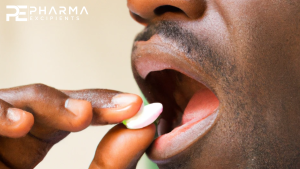Tailoring the release of drugs having different water solubility by hybrid polymer-lipid microparticles with a biphasic structure

The aim of this study is to investigate the potential of hybrid polymer-lipid microparticles with a biphasic structure (b-MPs) as drug delivery system. Hybrid b-MPs of Compritol®888 ATO as main lipid constituent of the shell and polyethylene glycol 400 as core material were produced by an innovative solvent-free approach based on spray congealing. To assess the suitability of hybrid b-MPs to encapsulate various types of APIs, three model drugs (fluconazole, tolbutamide and nimesulide) with extremely different water solubility were loaded into the polymeric core.
The hybrid systems were characterized in terms of particle size, morphology and physical state. Various techniques (e.g. optical, Confocal Raman and Scanning Electron Microscopy) were used to investigate the influence of the drugs on different aspects of the b-MPs, including external and internal morphology, properties at the lipid/polymer interface and drug distribution. Hybrid b-MPs were suitable for the encapsulation of all drugs (encapsulation efficiency > 90 %) regardless the drug hydrophobic/hydrophilic properties. Finally, the drug release behaviors from hybrid b-MPs were studied and compared with traditional solid lipid MPs (consisting of only the lipid carrier).
Due to the combination of lipid and polymeric materials, hybrid b-MPs showed a wide array of release profiles that depends on their composition, the type of loaded drug, the drug loading amount and location, providing a versatile platform and allowing the formulators to finely balance the release performance of drugs intended for oral administration. Overall, the study demonstrates that hybrid, solvent-free b-MPs produced by spray congealing are an extremely versatile delivery platform able to efficiently encapsulate and release very different types of drug compounds.
Download the full article as PDF here Tailoring the release of drugs having different water solubility by hybrid polymer-lipid microparticles with a biphasic structure
or read it here
Materials
Compritol®888 ATO was kindly supplied from Gattefossè (Milan, Italy). Cetylstearyl alcohol, polyethylene glycol (PEG) 400, tolbutamide (TBM), nimesulide (NIM) were purchased from Sigma Aldrich (Steinheim, Germany). Fluconazole (FLU) was obtained from Acofarma (Madrid, Spain). Rhodamine, used as coloured dye for the PEG phase, was purchased from Sigma Aldrich. All other chemicals were of analytical grade. The properties of the APIs used are reported in Table 1.
Serena Bertoni, Beatrice Albertini, Joanna Ronowicz-Pilarczyk, Nadia Passerini, Tailoring the release of drugs having different water solubility by hybrid polymer-lipid microparticles with a biphasic structure, European Journal of Pharmaceutics and Biopharmaceutics, Volume 190, 2023, Pages 171-183, ISSN 0939-6411, https://doi.org/10.1016/j.ejpb.2023.07.017
Read more on “Orally Disintegrating Tablets (ODTs)” here:


